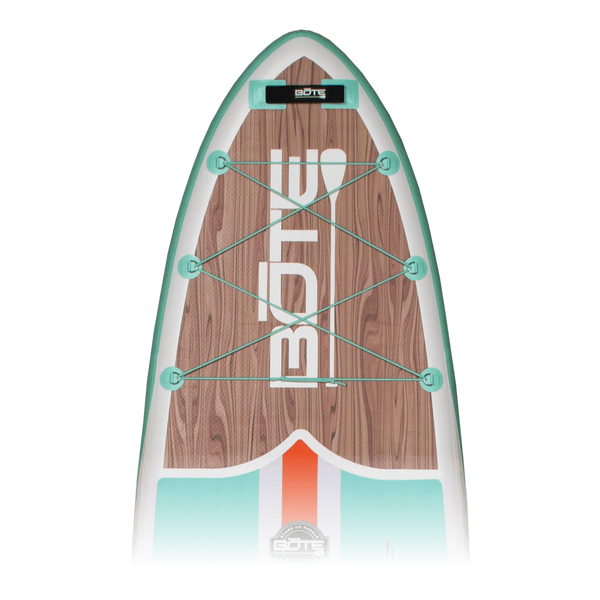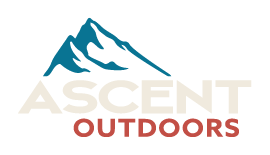
How to Pick the Perfect Paddleboard

Paddleboards are one of the easiest and most accessible ways to get out on the water to explore, savor the scenery, and beat the heat. But how do you pick the perfect board for you with so many choices?
When weighing your options for a paddleboard purchase, you’ll want to consider the following factors: What’s the right length/width of board for your stature? Do you need an inflatable or solid board? What’s the best shape for the type of paddleboarding you want to do? Read on for answers!
How big a paddleboard will you need?
Generally speaking, bigger boards are better for bigger folks. Board length, width, and thickness determine volume, and more volume equals more stability. Each board will have its own maximum load capacity as determined by its manufacturer, so be sure to check when browsing!
However, when it comes to board LENGTH, function comes into play as well. Short boards work great for kids, but are also often boards that are meant for whitewater or surfing. Medium boards are often the most general-purpose boards for leisure paddling and SUP fitness. Long boards are typically paired with silhouettes intended for speed and distance.
As for the other dimensions, wider and thicker boards provide more stability (via more volume) and can be helpful to balance heavier loads. More stability often shaves off speed, so they’re not without a compromise, but bigger volume boards usually feel best for beginners. Wider boards are also great for packing gear for paddling overnights or taking along kiddos or a dog. Smaller people will want shorter, narrower, thinner boards to more efficiently weight the board for performance and to avoid overexertion when paddling.
What will you use your paddleboard for?
Both inflatable and solid SUPs come in all types and configurations. Solid SUPs are built for performance and stability/rigidity, but won’t serve all purposes. Inflatable SUPs can’t be beat for travel and portability to remote locations, or for using when there’s a bumpy ride. Fans of SUP yoga will also prefer inflatable models for a more cushy, comfortable surface.
If you want to use your board for camping or leisure floating, consider whether you’d prefer a model with tie-down elastic straps built in. Some boards meant for fishing or touring have other attachments for rods, seats, and extra gear.
Where will you want to paddle most frequently?
Size and silhouette influence whether a paddleboard will be best for leisure paddling, board fitness/SUP yoga, shredding and carving waves, or traveling fast and far on paddleboard touring adventures. Short, blunt planing hull boards are great for stability in waves, whitewater, and surf. Mid-sized, blunt-tip boards are fantastic for lakes and sea and can handle chop as well, but require different maneuvering. Longer, pointier displacement hull boards do best in stiller water (but can also handle some chop) and are meant for slicing through the surface for faster, longer distances.
How will you store your paddleboard?
If storage space at your home is at a premium, a solid/hard board may not be best for you. Inflatable SUPs pack down to the size of a large expedition bag and can be comfortably stored in a closet.
How will you transport your paddleboard?
Similar to storage, the sort of capacity you have for your board in your vehicle may determine what type of board you should get. Do you have a roof rack that can transport a solid board? Will you need a roof box for an inflatable board?
What paddleboard accessories will you need?
You may need other accessories to make your paddleboard purchase complete. Consider the following:
A personal flotation device (life jacket) — Don’t mess with safety! Even competent swimmers die in watersports activities every year. Make sure you have a weigh-rated, compact PFD to take with you on every adventure.
A paddle — Some boards come with paddles and some don’t. Even so, you may have a particular paddle preference. Make sure you get a paddle that’s the right height. At the correct length, you should be able to extend your arm overhead while standing and comfortably grasp the handle, which should come to wrist height.
A leash — A board leash is a heavy-dirty elastic cord that attaches to your ankle via an adjustable neoprene and Velcro strap and clips into your board to prevent the board from shooting out from under you and getting away if you bail off or lose your balance (or, you know, fully intentionally take a swim).
A wetsuit, drysuit, or body suit — It can be cold out there in the PNW! Stave off hypothermia from the glacier-cold waters of a scenic mountain lake or the Pacific Ocean with a shorty or full-body wetsuit, dry suit, or body suit!
A car rack or roof box — If you have a hard board, you’ll want a roof rack designed to carry it. If you have an inflatable board, it may fit in your car, but a Thule roof rack will also give you tons more square footage for your board and accessories!
What’s more, you can try before you buy by renting one of our all-purpose paddleboards for a weekend (or mid-week) adventure to see how it feels to walk on water. Come in and visit with our staff for expert advice! All board rentals come with paddle, leash, and PFD.
